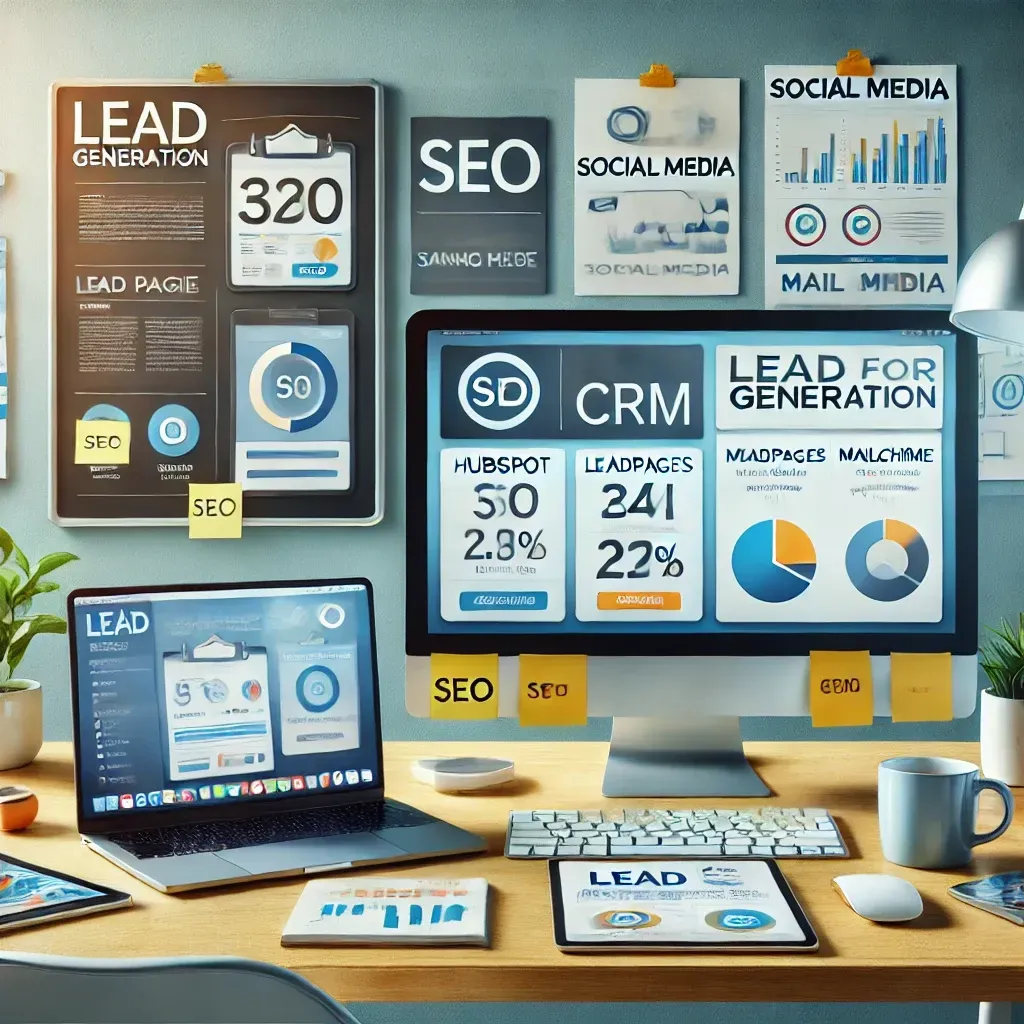Lead Generation for Beginners: A Step-by-Step Guide to Growing Your Client Base
In today’s competitive market, generating leads is essential for business growth. Yet, many businesses struggle to understand the fundamentals of lead generation and how it works. This guide will break down the lead generation process into simple, actionable steps to help beginners attract high-quality leads and convert them into paying customers. With the right lead generation strategies, you can establish a steady stream of prospective customers for your product or service.
Understanding Lead Generation
What Is Lead Generation?
Lead generation is the process of attracting and converting potential customers who show interest in your product or service. It involves creating valuable content, using landing pages, and employing lead magnets to capture the attention of your target audience.
Key Components of Lead Generation:
- Identifying your target audience
- Creating relevant content
- Capturing potential leads using forms or other tools
- Nurturing leads until they’re ready to become paying customers
Why Lead Generation Is Important for Your Business
Effective lead generation is the foundation of a successful business. Without a steady influx of potential customers, your sales and marketing teams will struggle to achieve growth.
Benefits of Lead Generation:
- Increases visibility and brand awareness
- Drives high-quality leads to your sales funnel
- Improves ROI on marketing efforts
- Supports the sales team in closing more deals
The Basics of the Lead Generation Process
Step 1: Define Your Target Audience
Your target audience is the group of people most likely to purchase your product or service. Understanding their pain points, preferences, and behaviors is essential to creating effective lead generation marketing strategies.
How to Define Your Target Audience:
- Conduct market research
- Analyze customer feedback
- Use tools like customer relationship management (CRM) software to gather data
Step 2: Create Valuable Content
Valuable content is the backbone of any lead generation campaign. By addressing the pain points of your audience, you can attract website visitors and guide them toward taking action.
Types of Content to Generate Leads:
- Blogs and articles optimized for search engines
- E-books and whitepapers
- Webinars and videos
Step 3: Use Lead Magnets
Incentives known as lead magnets are used to get prospective leads to submit their contact details. These are essential for collecting data and moving leads through your sales funnel.
Examples of Lead Magnets:
- Free trials
- Downloadable guides
- Exclusive discounts

Tools and Techniques for Lead Generation
Essential Lead Generation Tools
Lead generation tools help automate the process and improve efficiency. These tools allow you to capture, nurture, and qualify leads with minimal manual effort.
Top Lead Generation Tools:
- HubSpot: For CRM and automation
- Leadpages: For creating optimized landing pages
- Mailchimp: For email marketing
Effective Lead Generation Techniques
Lead generation tactics can vary depending on your goals and target audience. Some strategies focus on inbound lead generation, while others rely on outbound lead generation.
Popular Techniques:
- Search engine optimization to improve visibility
- Social media marketing to engage with prospective customers
- Email campaigns to nurture leads
Crafting a Lead Generation Strategy
A well-thought-out lead generation strategy is critical to achieving your goals. Here’s how to build one step by step:
Step 1: Set Clear Goals
Determine what you want to achieve, whether it’s capturing more leads, increasing conversions, or improving lead quality.
Step 2: Build Optimized Landing Pages
Landing pages should be simple, clear, and focused on converting website visitors into qualified leads. Include forms to capture leads and add compelling calls-to-action (CTAs).
Step 3: Leverage Social Media Platforms
Use platforms like Facebook, LinkedIn, and Instagram to reach your target audience. Engage with followers by posting relevant content and running targeted ads.

Nurturing Leads to Convert Them into Paying Customers
Once you’ve captured potential leads, the next step is nurturing leads until they’re ready to purchase. This involves staying engaged and offering valuable content tailored to their needs.
Best Practices for Lead Nurturing:
- Use personalized email campaigns
- Segment leads based on their behavior
- Provide ongoing education about your product or service
Measuring and Improving Your Lead Generation Efforts
Tracking the performance of your lead generation efforts is essential to refining your strategies. Monitor key metrics like conversion rates, lead-to-customer ratios, and ROI.
Tools to Measure Success:
- Google Analytics for tracking traffic
- CRM software for lead management
- Email marketing platforms for engagement data
Mastering Lead Generation: How Marketing and Sales Teams Can Work Together to Generate High-Quality Leads
For beginners, understanding how marketing and sales teams collaborate is essential to building an effective lead generation funnel. The process begins with content marketing to attract and engage customers, offering valuable resources that address their pain points. Using lead capture tools like optimized lead generation forms, businesses can collect leads and categorize them into marketing qualified leads or product qualified leads for further nurturing.
As prospects move through the funnel, lead scoring helps prioritize those most likely to convert into sales qualified leads, streamlining your sales process. This alignment ensures that sales efforts focus on high-potential opportunities, ultimately improving the efficiency of your sales lead generation strategy.
By combining these tactics, you not only create an integrated approach to online lead generation but also ensure you generate high-quality leads that are more likely to convert into loyal clients. Remember, effective lead qualification and a seamless handoff between marketing and sales are key to success.

Why Lead Generation Is Important for Business Growth
Lead generation is important because it fuels the growth of your business by identifying and attracting potential clients who are genuinely interested in your products or services. Without a robust lead generation strategy, businesses risk losing opportunities to connect with the right audience, which can hinder long-term success.
A well-implemented lead generation strategy not only increases brand visibility but also ensures that your marketing and sales efforts are focused on high-quality leads. This targeted approach improves conversion rates and optimizes resource allocation, ultimately driving profitability. Recognizing the significance of lead generation helps businesses stay competitive and maintain a steady pipeline of potential clients, ensuring sustainable growth.
Why Service Qualified Leads Are Critical to Demand Generation and Marketing Success
Understanding the concept of a service qualified lead (SQL) is crucial in creating effective demand generation strategies. A service qualified lead refers to a prospect who has expressed a clear interest in your services, such as booking a consultation or requesting more information about your offerings. These leads signal readiness to move forward, making them a valuable focus for your marketing and sales efforts.
Recognizing why lead generation is important in this process ties everything together. By implementing targeted campaigns, businesses can identify and nurture these high-value leads, ensuring they are handed off seamlessly between marketing and sales teams. This collaboration ensures that both teams work toward the common goal of converting SQLs into loyal clients, while boosting the efficiency and effectiveness of your overall strategy.
Focusing on SQLs within your demand generation plan ultimately enhances client acquisition and retention, securing long-term growth for your business.
Effective Lead Generation Tactics to Attract High-Quality Clients
Implementing the right lead generation tactics can significantly improve your ability to attract and convert potential clients. Here are some proven approaches:
- Content Marketing: Create blogs, videos, or infographics that provide value to your audience, such as “Top Tax Preparation Tips for Small Business Owners.”
- Gated Resources: Offer downloadable guides, eBooks, or checklists in exchange for contact details through lead capture forms.
- Email Campaigns: Use personalized email sequences to nurture leads, offering relevant content and solutions to keep them engaged.
- Social Media Engagement: Share content on platforms like LinkedIn and Facebook, interact with followers, and run targeted ads to reach your ideal audience.
- Webinars and Workshops: Host online events to showcase your expertise, answer questions, and capture contact information from attendees.
By combining these lead generation tactics, businesses can effectively attract high-quality leads, nurture them through the funnel, and convert them into loyal clients. Tracking the performance of each tactic ensures continuous optimization and better results over time.

Leveraging Content Marketing to Generate Sales Leads and Align Sales and Marketing
Content marketing is a critical strategy for attracting and converting sales leads while fostering collaboration between sales and marketing teams. High-value content, such as blog posts, case studies, or video tutorials, can address the pain points of your target audience and guide them toward your services.
For example, an article titled "Top Tax Strategies for Small Business Owners" can engage prospects and drive them to take action, such as signing up for a consultation or downloading a resource. These leads can then be qualified and passed on to the sales team, ensuring a seamless handoff from marketing to sales.
When sales and marketing work together to create and promote targeted content, they can align on goals, improve lead quality, and streamline the sales funnel. This collaboration ensures that content attracts high-value sales leads and helps convert them into loyal clients, driving business success.
Effective Lead Generation Strategies Using Social Media Platforms and Lead Scoring
Combining effective lead generation strategies with social media platforms and lead scoring can help businesses attract, engage, and convert high-quality prospects.
- Leverage Social Media Platforms: Platforms like LinkedIn, Facebook, and Instagram allow you to reach your target audience through tailored content. Share blogs, infographics, and videos that address your audience’s pain points. Run targeted ads to reach specific demographics, such as small business owners or freelancers needing accounting services.
- Incorporate Lead Scoring: Use tools to assign scores to leads based on their engagement with your social media content, such as clicks on ads, downloads of gated resources, or participation in webinars. This scoring system helps your team prioritize high-value leads.
- Integrate Social Media with Lead Nurturing: Use social media to drive traffic to optimized landing pages with lead capture forms, ensuring a steady flow of new leads. Nurture these leads through personalized follow-ups and email campaigns based on their lead scores.
By combining social media platforms with lead scoring as part of your overall lead generation strategy, you can focus on the most promising opportunities, ensuring efficient use of resources and maximizing conversions.
Optimizing Lead Generation Forms and Techniques for Better Lead Qualification
Effective lead generation techniques rely on well-designed lead generation forms to attract and qualify potential clients. Here’s how to optimize these elements:
- Create User-Friendly
Lead Generation Forms
Keep forms short and focused, asking only for essential information such as name, email, and specific service needs. Place these forms on key landing pages, such as those promoting free consultations or downloadable resources, to maximize conversions. - Leverage Lead Generation Techniques
Offer gated content like eBooks, webinars, or exclusive financial tools to encourage users to fill out your forms. Combine this with targeted ads and SEO-driven content to drive traffic to your website and capture high-quality leads. - Prioritize Lead Qualification
Use tools like lead scoring to assess the quality of leads based on their interactions with your forms and content. For example, a prospect who downloads multiple resources and requests a consultation is more likely to convert than one who merely visits a page.
By refining your lead generation forms, implementing proven lead generation techniques, and focusing on lead qualification, you can ensure your efforts attract the right audience and drive meaningful business growth.

Building a Lead Generation Funnel to Drive Conversions
A well-structured lead generation funnel is essential for guiding prospects through the process of discovering, engaging with, and eventually purchasing your services. Here's how to create an effective funnel:
- Awareness Stage
At the top of the funnel, focus on attracting attention through SEO-optimized content, social media posts, and targeted ads. Blog posts, infographics, and videos that address common pain points can drive traffic to your website. - Consideration Stage
Engage visitors by offering gated resources like eBooks, webinars, or free consultations in exchange for their contact information. Use lead capture forms on dedicated landing pages to collect essential details. - Decision Stage
Nurture leads with email campaigns, personalized follow-ups, and case studies that demonstrate the value of your services. Use lead scoring to prioritize prospects who show strong engagement, ensuring your team focuses on the most qualified leads.
By optimizing each stage of your lead generation funnel, you create a seamless journey that attracts potential clients, builds trust, and converts them into loyal customers. Regularly analyzing the funnel's performance will help you identify areas for improvement and maximize results.
Using Search Engines to Generate More Leads for Your Business
Search engines are one of the most effective tools for driving traffic and capturing more leads. By optimizing your website with relevant keywords and creating high-quality content, you can ensure your business appears in front of potential clients when they search for services you offer.
For example, targeting terms like "accounting services near me" or "tax preparation for small businesses" helps attract local prospects actively seeking your expertise. Pair this with strategies like Google Ads to boost visibility and reach users with high purchase intent.
Incorporating strong calls-to-action (CTAs) and lead capture forms on your site ensures that visitors can easily provide their contact information. This integration of search engine optimization and targeted lead generation tactics positions your business to consistently attract and convert more leads into loyal clients.

The Most Effective Lead Generation Tactics for Consistent Growth
Implementing the most effective lead generation tactics ensures your business attracts high-quality prospects and converts them into clients. Here are three proven tactics:
- Content Marketing with Gated Resources
Create valuable, SEO-optimized content such as blog posts, whitepapers, or eBooks that solve specific problems for your audience. Use lead capture forms to gate these resources, collecting contact details in exchange for access. - Targeted Social Media Advertising
Platforms like LinkedIn, Facebook, and Instagram allow you to run highly targeted ads. Focus on demographics such as location, profession, or industry to reach the right audience and drive traffic to your landing pages. - Email Campaigns with Personalization
Use personalized email sequences to nurture leads captured through your other tactics. Share relevant tips, case studies, or exclusive offers tailored to their needs, building trust and encouraging action.
By combining these tactics, you create a streamlined process that consistently generates high-quality leads and nurtures them through the sales funnel for long-term success.
Best B2B Lead Generation Strategies to Drive Business Growth
Effective B2B lead generation strategies are critical for building relationships and securing high-value clients. Here are three proven approaches:
- Account-Based Marketing (ABM)
Focus on targeting specific companies or decision-makers that align with your ideal client profile. Use personalized content, such as tailored email campaigns or industry-specific case studies, to engage prospects and highlight how your product or service solves their unique challenges. - LinkedIn Outreach and Content
LinkedIn is a powerful platform for B2B lead generation. Share high-value content like blogs, whitepapers, and success stories to establish credibility. Combine this with direct outreach to decision-makers, offering solutions tailored to their business needs. - Webinars and Virtual Events
Host webinars or virtual workshops on industry-relevant topics. These events not only demonstrate your expertise but also allow you to collect leads through registrations. Follow up with attendees using personalized email campaigns to nurture relationships.
By leveraging these B2B lead generation strategies, businesses can effectively attract and convert high-quality leads, ensuring sustainable growth and long-term success.

Top Marketing Strategies for Lead Generation
Businesses may acquire and convert high-quality leads by putting efficient marketing techniques for lead generation into practice. Here are three powerful strategies:
- SEO-Driven Content Marketing
Create blog posts, infographics, and videos optimized with keywords relevant to your target audience. For example, an accounting firm might publish content on "Top Tax Tips for Small Businesses." Pair this with strong lead capture forms to collect visitor information. - Social Media Advertising
Use platforms like LinkedIn, Facebook, and Instagram to run targeted ads. Highlight your services and offer gated content, such as downloadable guides or free webinars, to generate interest and attract leads. - Email Campaigns with Personalization
Send tailored emails to prospects based on their behavior, such as downloading a resource or visiting specific pages on your site. Include clear calls-to-action (CTAs) that guide recipients to schedule a consultation or learn more about your offerings.
By aligning these marketing strategies with your business goals, you can create a streamlined process for lead generation that consistently delivers results.
Using Landing Pages to Capture Sales Leads Effectively
Landing pages are a powerful tool for capturing sales leads and driving conversions. A well-designed landing page focuses on a single goal—encouraging visitors to take action, such as signing up for a consultation or downloading a resource.
To optimize your landing page, start with a compelling headline that highlights the value of your offer, such as "Maximize Your Tax Savings Today." Use concise, persuasive copy that explains how your product or service solves a specific problem. Include a visually appealing lead capture form with minimal fields, asking only for essential information like name, email, and service needs.
Adding trust signals, such as client testimonials or certifications, can reassure visitors of your expertise and encourage them to act. Integrating strong calls-to-action (CTAs) like "Get Your Free Consultation" ensures prospects know what to do next.
By focusing on these elements, landing pages can effectively convert visitors into qualified sales leads, fueling your sales funnel and driving business growth.

How to Generate Leads with Effective Lead Generation Campaigns
To successfully generate leads, businesses need to design lead generation campaigns that attract and convert high-quality prospects. Start by clearly identifying your target audience and understanding their pain points. Tailor your campaign to offer solutions, such as free consultations, downloadable guides, or webinars.
Leverage multiple channels like SEO, social media ads, and email marketing to maximize your reach. For example, create an engaging landing page with a lead capture form to collect contact information from visitors who are interested in your services. Use retargeting ads to re-engage users who interacted with your website but didn’t convert.
Track and analyze the performance of your lead generation campaigns using tools like Google Analytics or CRM software. This ensures you can refine your strategies and optimize your efforts to consistently generate leads and grow your client base. By focusing on audience needs and delivering value, your campaigns will yield sustainable results.
Identifying Your Target Audience to Build an Effective Sales Funnel
Understanding your target audience is crucial to creating a successful sales funnel that converts prospects into customers. Start by identifying the demographics, interests, and pain points of the individuals or businesses most likely to benefit from your product or service. For example, accountants might target small business owners seeking financial planning or individuals needing tax preparation services.
Once your target audience is defined, craft a sales funnel that addresses their specific needs at every stage. In the awareness phase, use educational content like blogs or webinars to highlight the value of your product or service. In the consideration phase, share case studies and testimonials to build trust. Finally, during the decision phase, offer personalized consultations or free trials to help prospects take the next step.
By aligning your messaging and strategy with the unique preferences of your target audience, you can create a seamless journey that converts leads into loyal clients, maximizing the effectiveness of your sales funnel.

How Sales Teams Can Leverage Lead Generation Marketing Strategies and Tactics
An effective sales team works hand-in-hand with lead generation marketing strategies to convert prospects into loyal customers. By aligning efforts with marketing, the sales team can focus on high-quality leads that are primed for conversion.
Lead generation tactics, such as using gated content, running targeted ads, and implementing retargeting campaigns, create opportunities for engaging potential clients. Marketing teams use these strategies to attract and qualify leads, handing over prospects who are ready for the next step in the sales funnel.
Sales teams can then personalize their approach, using insights from the lead's interaction history to address their specific needs. This synergy between marketing and sales ensures a seamless process, improving efficiency and driving higher conversion rates. By integrating these strategies, your sales team can close deals faster and contribute significantly to business growth.
Developing a Robust Lead Generation Strategy to Generate Leads Effectively
A strong lead generation strategy is essential for businesses looking to consistently generate leads and grow their client base. By combining targeted efforts with strategic planning, you can create a seamless process that attracts and converts high-quality prospects.
Start by using content marketing to provide value and draw in potential clients. Blog posts, guides, and videos addressing pain points are excellent tools for driving traffic and initiating lead generation. Use lead capture forms strategically placed on landing pages to collect contact details.
Next, nurture these leads through personalized email campaigns, webinars, or free consultations to keep them engaged. Implement tools like lead scoring to prioritize and focus your marketing and sales efforts on prospects most likely to convert. A well-structured lead generation funnel ensures that every stage of the process is optimized, from awareness to decision-making.
By continually refining your lead generation strategy, you can generate leads more effectively, improving both client acquisition and long-term business success.

Lead Generation Best Practices for Business Success
Implementing lead generation best practices ensures a steady flow of high-quality prospects and increases conversion rates. Here are some proven strategies:
- Optimize Your Website for Lead Capture
Ensure your website has strategically placed lead capture forms on landing pages, blog posts, and pop-ups. Keep the forms simple, requesting only essential information like name, email, and service needs. - Leverage Content Marketing
Create valuable content tailored to your target audience’s pain points. Blog posts, whitepapers, and eBooks attract potential clients and encourage them to share their contact details in exchange for access. - Utilize Multi-Channel Outreach
Combine SEO, social media, email campaigns, and paid ads to expand your reach. For example, use LinkedIn to connect with business professionals or Google Ads to target high-intent searches. - Implement Lead Scoring and Qualification
Use tools to assign scores to leads based on their interactions with your content and website. Focus on nurturing high-priority leads to improve efficiency and conversion rates.
By following these best practices, businesses can streamline their lead generation efforts, build trust with prospects, and drive sustainable growth.
Building a Comprehensive Lead Acquisition Strategy
A well-rounded lead acquisition strategy is essential for attracting and converting high-quality leads. Here’s how to craft an effective approach:
- Define Your Target Audience
Understand who your ideal clients are by analyzing their demographics, pain points, and decision-making behaviors. This clarity allows you to tailor your messaging and outreach for maximum impact. - Leverage Multi-Channel Marketing
Use a mix of channels, including SEO-optimized content, social media platforms, email campaigns, and paid ads, to reach prospects at different touchpoints. For example, create blog posts that address specific problems and pair them with targeted LinkedIn ads for better reach. - Implement Lead Capture and Nurturing
Place lead capture forms on key landing pages and offer incentives like free consultations, webinars, or downloadable resources. Once leads are acquired, nurture them through personalized email sequences and consistent follow-ups, ensuring they remain engaged. - Monitor and Optimize
Use analytics tools to track the performance of your strategy. Identify which channels and tactics generate the most qualified leads and refine your approach accordingly.
By integrating these steps, your lead acquisition strategy will drive consistent growth, ensuring a steady flow of potential clients ready to engage with your business.

Effective Lead Magnets to Boost Lead Generation
Lead magnets are valuable resources offered in exchange for a prospect’s contact information, making them a cornerstone of any successful lead generation strategy. Here are some highly effective lead magnets for attracting and converting leads:
- EBooks and Guides
Create detailed, actionable content such as “Top Tax Tips for Small Business Owners” or “A Step-by-Step Guide to Financial Planning.” These resources provide value while showcasing your expertise. - Webinars and Workshops
Host virtual sessions on niche topics relevant to your audience. For example, an accounting firm could offer a webinar on “Year-End Tax Strategies for Businesses.” - Templates and Checklists
Offer practical tools, like budgeting templates or financial health checklists, that your audience can use immediately. - Free Consultations or Audits
Encourage prospects to engage directly by offering free consultations, tax audits, or financial reviews. - Case Studies and Success Stories
Share real-world examples of how your services have helped clients solve specific problems.
Strategically promote your lead magnets on landing pages, social media platforms, and email campaigns. By aligning the value of your lead magnets with the needs of your audience, you can build trust and drive more conversions.
Strategies to Maximize Lead Conversion for Your Business
Lead conversion is the process of turning prospects into paying customers, and optimizing this step is crucial for business growth. Here are three strategies to boost your conversion rates:
- Personalized Follow-Ups
Engage leads with tailored email campaigns and follow-up calls. Use insights from their behavior, such as downloaded content or website interactions, to craft messages that address their specific needs and pain points. - Provide Clear and Compelling CTAs
Ensure your calls-to-action (CTAs) are direct and actionable, such as "Schedule Your Free Consultation" or "Get Started Today." Place CTAs strategically on landing pages, emails, and social media to guide leads toward conversion. - Build Trust with Social Proof
Share testimonials, case studies, and success stories to reassure prospects of your expertise. Demonstrating how others have benefited from your services increases confidence in your brand.
By focusing on these lead conversion strategies, you can effectively nurture relationships with prospects and turn them into loyal customers, driving sustainable success for your business.

Key Elements of Effective Lead Generation
Effective lead generation is about attracting the right prospects, nurturing relationships, and converting leads into loyal customers. Here are three essential elements:
- Value-Driven Content
Create content that addresses the specific pain points of your target audience, such as blog posts, videos, or webinars. For example, an accounting firm could offer a free guide on “Maximizing Tax Deductions for Small Businesses.” This positions your brand as a trusted authority while drawing in high-quality leads. - Optimized Lead Capture
Use intuitive lead capture forms on your website and landing pages. Keep forms short and focused, offering incentives like free consultations or downloadable resources to encourage visitors to share their contact information. - Personalized Nurturing Campaigns
Once leads are captured, implement personalized email campaigns that guide them through the sales funnel. Tailor messages based on their behavior, such as visiting specific pages or downloading a resource, to maintain engagement and increase conversion rates.
By focusing on these elements, you can build a reliable lead generation system that consistently delivers high-quality prospects to grow your business.

Top Lead Marketing Strategies to Boost Client Acquisition
Lead marketing strategies are essential for attracting, nurturing, and converting potential clients. Here are three highly effective strategies:
- Content-Driven Marketing
Create high-quality, SEO-optimized content such as blog posts, eBooks, and videos that address your target audience’s pain points. For example, an accounting firm might publish articles like “Tax Tips for Freelancers” or “How to Manage Small Business Finances.” Use these resources to capture leads through gated forms. - Social Media Campaigns
Leverage platforms like LinkedIn and Facebook to share your content and run targeted ad campaigns. These campaigns can drive traffic to landing pages with lead capture forms, helping to build a steady flow of new prospects. - Email Marketing Automation
Use email campaigns to nurture leads over time. Segment your audience based on their behavior or interests, and send tailored messages with calls-to-action, such as scheduling a consultation or downloading additional resources.
By aligning these lead marketing strategies with your business goals, you can create a consistent pipeline of high-quality leads and improve your overall conversion rates.

Contact Us for a Free Consultation
Generating leads doesn’t have to be overwhelming. At Masterly Tech Group, we specialize in effective lead generation strategies designed to help businesses grow. Whether you’re just starting out or looking to improve your sales and marketing efforts, we’re here to help.
Contact us at (888) 209-4055 to book a free consultation. Let us answer your questions, provide guidance on lead generation best practices, and create a custom plan to attract high-quality leads to your business. Together, we can turn potential leads into loyal customers.











